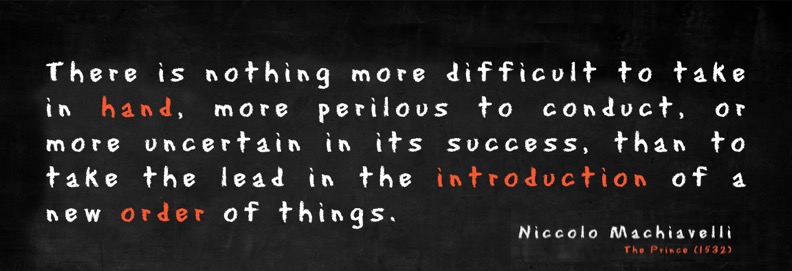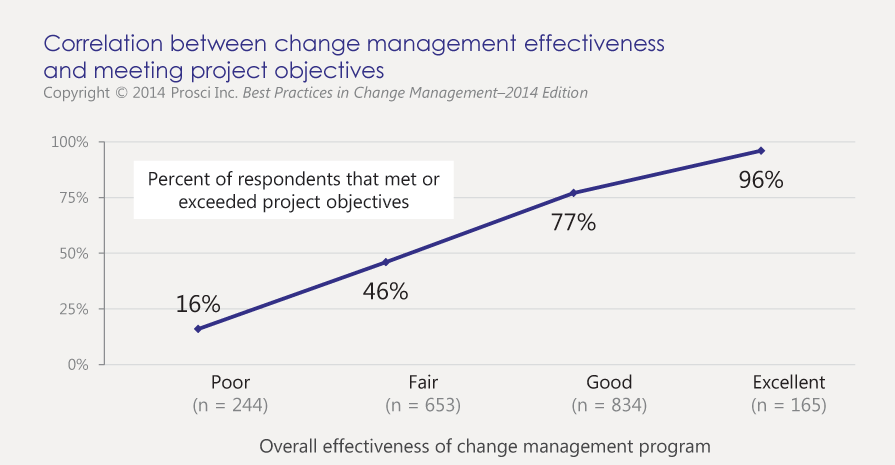Resistance is futile, change is inevitable

Change management is essential in today’s workplace. With the velocity of change in today’s world, the last thing you want is to unexpectantly log onto your work computer one morning to find a whole new desktop layout, tool, application, and/or re-visioned intranet. I mean come on, you are still haven’t gotten to figuring out the last new, revolutionary, transformational tool that was rolled out a month ago. A little head’s up notice would have been nice (not that you would have necessarily paid attention to in any way).
“Yay, something else has changed!” said no one ever
So if you’ve been tasked with transforming your organization’s next best – time tracking, content management system, intranet, <insert tool/process/project/team here> – lucky you! One of the biggest challenge ahead for you is:
- Selecting the right technology? No.
- Securing funding? Nope.
- Governance? A biggie for sure, but, uh-uh.
- Effective change management? Bingo! That’s it.

Figure 1: Prosci findings of correlation between change management effectiveness and meeting project objectives.
According to Prosci’s eight year correlation of data from over 2,000 data points (see Figure 1), projects rated with “excellent” change management efforts were six times more likely to meet objectives than those rated with “poor” change management efforts. McKinsey data also supports this with research showing that the ROI captured when excellent change management is executed is significantly more than with poor change management. This isn’t an earth shattering revelation or even surprising. The more people are prepared – whether it is for a vacation, exam, or to accept/adopt a change, the more successful the endeavor will be.
Change [CHeynj]: To make the form, nature, content, future course, etc., of (something) different from what it is or from what it would be if left alone.
Most people dislike change. To most: familiar = good, new/different = bad. Even if the change involves something that is undisputedly better, change is uncomfortable at best and flat out resisted at worst – regardless of the perceived or understood value of the change taking place.
So while organizations pour time, money, and effort into building a great intranet/ERP/etc., they need to spend comparable effort ensuring that the new change will be accepted and embraced by its users, or their investment may be for not. After all, if the new tool/solution is brilliant and no one uses it – is there an actual the benefit?
There is comfort with the Devil you know
Research has shown that process/accepting change is akin to grieving a loss – because regardless of whether is a new process, application, or change in team, and no matter how much better things are/will be with this “something new”, people still perceive the loss of something they knew and were familiar with. And no matter whether the predecessor to the change was beloved or loathed, most find comfort in the “devil you know” versus that they don’t.
There are many factors – company culture, the solution being implemented, level of communications leading up to the change, etc. – that can affect how much time and how successful the change is executed. But regardless of these factors, the stages employees will go through are fairly predictable: awareness, resistance/denial, acceptance, and finally/eventually/hopefully, buy-in. Communications through these stages should vary to address and (attempt to) allay expected concerns and contentions, as well as clearly articulate the WIFM (what’s in it for me) for employees.
The first step toward change is awareness. The second step is acceptance. ~Nathaniel Branden
The more significant the change, the more important it is to ensure that ample communications, via various channels, is executed to help evade or at least minimize the inevitable resistance that will arise. And don’t think that there won’t be a least some resistance – there is always a small number of employees who will fight change, regardless of what that change may be.
Good change management can make change less painful
Eventually that resistance, no matter how small or large, will die down and employees will accept that the change is taking place. This doesn’t necessarily mean employees have “seen the light” or “bought in” that the new structure/solution/process is a good one, or that they like it, but rather, they have accepted that resistance is futile and a waste of energy. Keeping tabs on the progress towards acceptance, and addressing new waves of dismay and resistance is important to establishing a new norm.
Have you experienced great change management in the introduction of a new intranet or other corporate tool/system? We’d love to hear your story.








